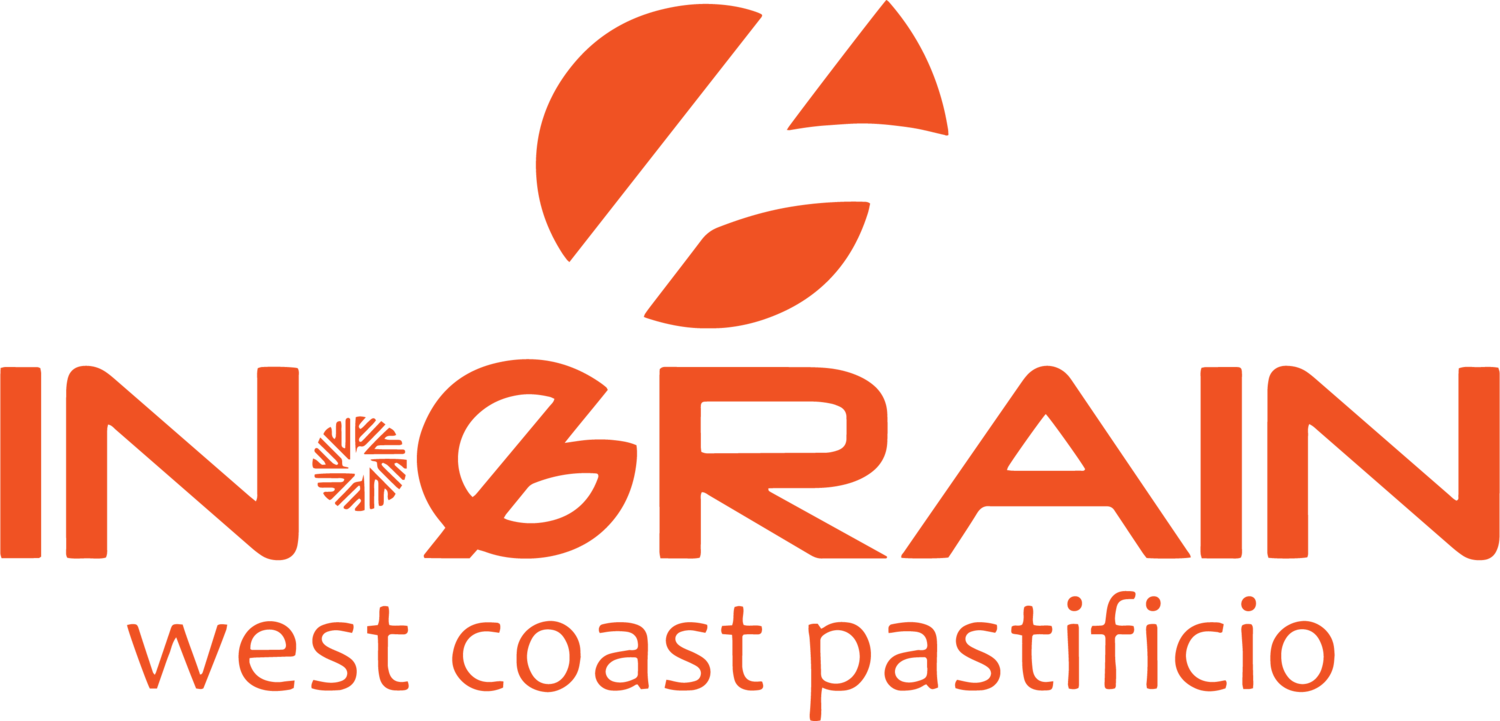We are fortunate to be surrounded by some wonderful grain handling facilities and small scale organic mills. We draw our grains and inspiration from the kind people at Anita's Organics, Fieldstone Organics and Millstream Natural Foods. We are also looking forward to working closely with Shira at eatgrain.ca as a possible micro mill and supplier of fresh western grains. Our farmers are benefiting from the increased demand and direction supplied by you the informed consumer. Let's work together to repair our food supply.
“Our food system belongs in the hands of many family farmers,
not under the control of a handful of corporations.” Willie Nelson
Organic Einkorn
Einkorn has a higher percentage of protein than modern red wheats and is considered more nutritious because it has also higher levels of fat, phosphorus, potassium, pyridoxine, and beta-carotene.
In contrast with more modern forms of wheat, evidence suggests the gliadin protein of einkorn may not be as toxic to sufferers of coeliac disease.
Uses
The high protein count in this grain makes strong pastas and requires a lot of attention during the extruding process. Because einkorn contains less starch and weaker gluten than regular wheat, cakes can bake a bit denser so try adding an extra egg or egg white to the batter. Beat less and at lower speed or by hand for lighter textures in cakes and muffin recipes.
Organic Kamut
Originating in the Fertile Crescent and also known as Khorasan, Kamut is rich with Selenium and Zinc. Both are crucial cofactors of antioxidant enzymes, while polyphenols and vitamin E are essential antioxidants. Kamut is the high energy wheat that doesn't drain your bodies' energy to digest.
Uses
We love the simplicity and flavours of this grain. It substitutes very well for Durum Semolina in all of our pastas. Kamut has a 'buttery' flavour so it bodes well in any baking application.
Organic Durum Semolina
Semolina is the grain of choice for pasta making. It is made from the hard wheat called durum wheat. Although durum wheat is also used to make durum flour, the two flours are not the same. Semolina is made by coarsely grinding the endosperm or heart of the durum wheat kernel. While grinding it, a fine powder is also produced, which is the durum flour.
When mixed with water, semolina forms a stiff dough that is the main raw ingredient in making pasta. Semolina is also used for a variety of other purposes, including hot breakfast cereals, desserts, artisan breads and cookies.
Uses
Our Durum flour loves tomato sauce, pork and Sangiovese wines. This is a match made in heaven for Durum Semolina. Try the Penne all'Amatriciana on our menu. In addition to pasta dough, there are a number of other uses for semolina. You can substitute semolina flour for some or all of the all-purpose or whole-wheat flour in a bread recipe, which will produce a bread that is tender with a crisp crust. Or make a hot cereal by heating semolina and milk over low heat, stirring constantly, until it thickens. Try adding a pinch of semolina to thicken soups and gravies (because of its high gluten content, a little goes a long way). You can even use semolina to dust the bottom of a pizza crust.
Organic Emmer
Emmer is among one of the oldest cultivated grains of our time and is believed to be one of the parent plants of all Durum wheats. It has been grown in the Middle East, North Africa and Italy for thousands of years and today is a common ingredient in Italian foods.
As such, Emmer contains the valuable characteristics of having low gluten, which allows people with gluten or wheat allergies to also enjoy this flour. Its density and sweet flavoring give Emmer many different application options and can be added to majority of your yeast-baked goods.
Uses
Emmer Flour is good substitute for any regular wheat flour called for in your recipes. We especially like its dense makeup for baking breads and cooking pastas.
Organic Spelt
Spelt is considered one of the world's ancient grains. Spelt goes by many other names including, Dinkel (German) and Farro (Northern Italy). Spelt was one of the first grains used to make bread, with reference to it in the Old Testament of the Bible. Spelt is one of the few grains today that doesn't require pesticides. Spelt is a distant cousin to the wheat we are accustomed to today. Although Spelt has been cultivated since 5000 B.C. there has been very little breeding of the grain.
As such, it has carried with it the wonderful characteristics that allow some wheat intolerant persons the ability to eat it. You can substitute spelt flakes in your recipe to replace a part of the ground meat in burger recipes. Spelt flour can substitute for wheat flour in many products, with a few minor adjustments. The starch in spelt is more soluble than wheat and recipes containing spelt flour will frequently require less water than when using wheat flour.
Uses
Spelt brings a darker, earthier flavour to the pasta. It pairs very well with bitter green vegetables like rapini or rabe and any dry crisp white wine such as sauvignon blanc brightens the dish. You can substitute spelt flour in any recipe calling for wheat flour, such as pasta, bread, cookies, crackers or baked goods.
Buckwheat Flour
Surprise! Buckwheat is actually a fruit even though it is commonly thought to be a grain. Buckwheat is a fruit seed that is related to rhubarb and sorrel. Buckwheat is actually considered a seed and is not part of the wheat family at all. Buckwheat is gluten free.
Uses
Buckwheat flour has a strong, distinctive flavor and is often mixed with other flours to lend its distinctive taste to many baked goods. Traditionally used for Soba noodles.

